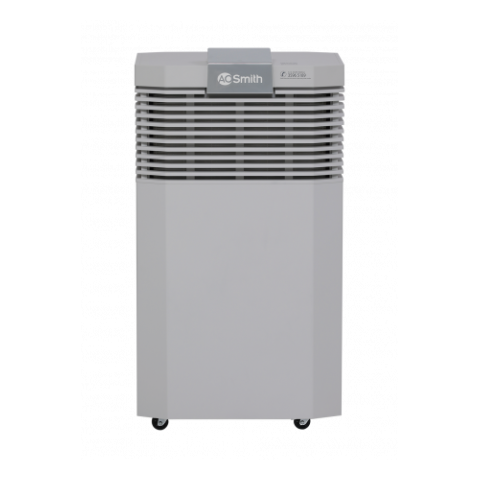Be knowledgeable about how air purifiers work and what it takes for their filters to conform to the HEPA industry standard. Know the common misconceptions regarding air filters and recognize misleading titles such as "HEPA like" and "HEPA type".
Are you sure you're breathing clean air?
People spend approximately 90 percent of their time indoors (home and work), but little attention is given to improving quality of indoor air.
Research finds indoor air pollutants can be five times more hazardous than outdoor air pollution. Headache, dizziness, dry cough, infections, allergies and increased asthma attacks are just among health conditions attributed to airborne building contaminants.
Poor indoor air quality is often caused by poor ventilation plus the presence of biological and chemical contaminants.
Air purifiers as a way to enhance indoor air quality
Filtration using air purifiers is the most recommended measure in reducing exposure to environmental contaminants where open windows are not advisable. It works by eliminating airborne particles using filters on an air purifier.
Knowing the MERV and HEPA standards on air filters, the most important component of the air purifier,will help you choose the right air purifier for you.
What is a MERV rating?
MERV stands for minimum efficiency reporting value. It is a a measurement scale that rates the efficiency of filters in capturing airborne particles of varying sizes.
MERV ratings range from 1 to 20. The higher the MERV rating is on a filter, the higher the percentage of airborne contaminants it can trap.

![]()
What is a HEPA filter?
HEPA or High Efficiency Particulate Air filters are mechanically pleated filters that are extremely effective at trapping and removing airborne particles, microorganisms and other contaminants from the air.
HEPA filters are tested to certify that it could remove 99.97% of airborne particles that are 0.3 microns. HEPA filters are made from interlaced fiberglass that capture airborne particles.

How do HEPA filters capture airborne contaminants?
There are 4 methods:
Diffusion: Since smaller and finer particles tend to move more erratically (this is called Brownian Motion) they are more likely to be captured by the fibers.
Impacting: Larger particles tend to travel on a straight path so they are more likely to be captured by the fibers' maze-like configuration.
Interception: Airflow can help particles pass through fibers, but because of inertia, they end up sticking to the sides of the fibers.
Sieving: If the particles being carried by an air stream are larger than the gap between two fibers; they are captured

The Most Penetrating Particle Size: 0.3 Microns
If you're wondering if a HEPA filter can capture superfine particles smaller than 0.3 microns, yes it can.
HEPA filters are tested at 0.3 microns for a reason. The 0.3 micron diameter specification refers to the MPPS, or the most penetrating particle size meaning they are too small to be captured by inertia yet too large to be captured by Brownian Motion so they tend to be just the right size for a particle to pass through an air filters' fibers on the basis of the 4 methods listed above. Particles that are smaller or larger than 0.3 microns, however, are captured with higher efficiency.

![]()
CAUTION: "HEPA like" and "HEPA type" filters aren't True HEPA
Air filters tagged as “HEPA Type” or “HEPA Like” do not meet the standards of a True HEPA filter. These terms are sometimes added to mislead consumers into purchasing lower quality air purifiers and filters. HEPA-like filters may be made out of thin fiberglass but have less density and are unable to trap small and harmful particles which a True HEPA filter normally would.
HEPA-type filters are usually rated between 13 to 16 MERV and has a 99% efficiency rate or less at capturing particles as small as 2 microns which is below the industry standard for a True HEPA filter. In conclusion, terms like "HEPA type" or "HEPA like" are meaningless, a filter either meets the HEPA standard or it doesn't.
European standard for air filter classification:

![]()
When it comes to choosing air purifiers, standards are important
It is always good to be thorough when reading an air purifiers' details and specifications. Make it a habit to check if their filter has a HEPA rating in its description, tags such as "HEPA type" and "HEPA like" aren't True HEPA filters and only aim to mislead customers into purchasing lower quality air filters. Potential buyers should be wary of this.
Air purifiers are becoming a new household essential. Being informed about how air filters work along with the different standards and tests they are put through is important. Not all air filters are created equal. Hence being familiar with what sets apart one type of filter from the other and having multiple points of comparison can help you make better decisions when choosing which air purifier to get.




